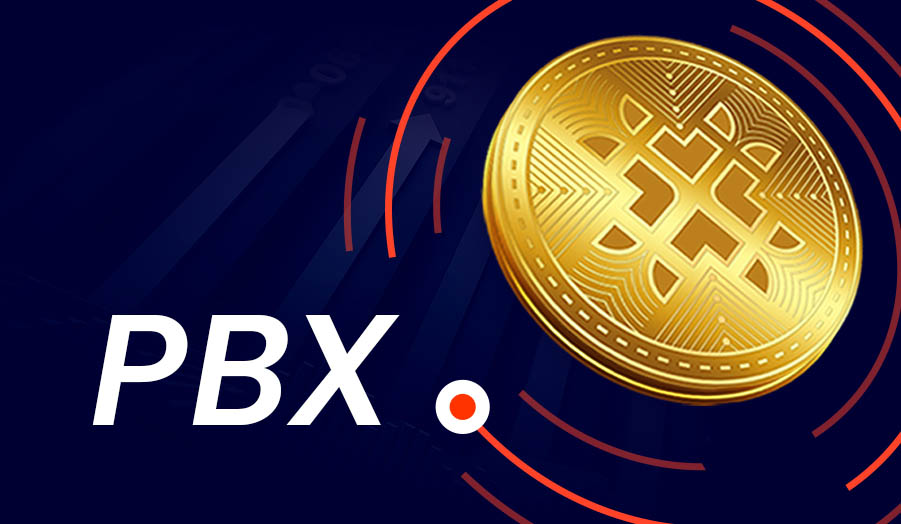How do Bitcoin ATMs Work and How They Facilitate Secure and Convenient Cryptocurrency Transactions
Imagine a world where everything is interconnected, where traditional means of exchange are rapidly evolving, and where the concept of transferring value has taken on an entirely new form. In this brave new world, an enigma quietly emerged, captivating the attention of both tech enthusiasts and financial experts alike. This enigma, veiled in complex algorithms and encrypted codes, goes by many names, each one whispering of a future yet to unfold.
Welcome to the realm of digital currency, a landscape defined by virtual transactions that transcend physical borders and bypass conventional financial institutions. In the midst of this ever-changing realm, a revolutionary invention emerged: the Bitcoin Automated Teller Machine (ATM). These cutting-edge devices have rapidly gained popularity, transforming the way we interact with cryptocurrencies and the tangible world of cash.
Disguised as sleek machines tucked away in bustling city corners or hidden within the walls of local businesses, these Bitcoin ATMs offer a gateway into an entirely new dimension of financial freedom. Gone are the days of lengthy online registration processes or complicated validation procedures. With a few simple steps and the touch of a screen, users can seamlessly convert their digital assets into traditional cash, or vice versa.
Behind their glass exteriors lies a world of intricate mechanisms and complex calculations. Peer into the inner workings of these enigmatic ATMs, and you’ll discover a fascinating synergy between the virtual landscape of digital currencies and the tangible realm of traditional cash. Prepare to unravel the mysteries of cryptography, delve into decentralized networks, and witness firsthand the intersection between the virtual and physical worlds.
Understanding the Basics of Bitcoin
Delving into the realm of digital currency, Bitcoin has emerged as a prominent player in the world of finance and technology. This section aims to provide a comprehensive understanding of the fundamental principles underlying the concept of Bitcoin.
Bitcoin, being a decentralized cryptocurrency, offers users a peer-to-peer electronic cash system that operates on a global scale. It enables individuals to conduct secure and transparent transactions without the need for intermediaries such as banks or governments.
At its core, Bitcoin utilizes blockchain technology, a distributed ledger that maintains a transparent record of all transactions. This public ledger ensures the integrity and immutability of transactions, making it resistant to fraud and manipulation.
| Key Concepts | Features |
|---|---|
| Cryptocurrency | Bitcoin is a form of digital currency that uses cryptography to secure transactions and control the creation of new units. |
| Decentralization | Unlike traditional financial systems, Bitcoin operates on a decentralized network, where no single authority has control over the currency. |
| Blockchain | Blockchain is a decentralized and transparent ledger that records all Bitcoin transactions, ensuring their security and immutability. |
| Wallets | Bitcoin wallets are digital wallets that allow users to store, send, and receive Bitcoin securely. |
| Mining | Mining is the process through which new Bitcoins are created and transactions are verified on the Bitcoin network. |
Furthermore, Bitcoin transactions are pseudonymous, meaning that users can conduct transactions without revealing their true identities. This offers a certain degree of privacy and anonymity to users.
Understanding the basics of Bitcoin is crucial for anyone looking to enter the world of digital currency. By grasping the key concepts and underlying principles, individuals can utilize Bitcoin in a secure and efficient manner.
The Evolution of Bitcoin ATMs
As time has progressed, the concept of Bitcoin ATMs has undergone significant changes, adapting to the ever-evolving landscape of digital currencies and customer needs. This section aims to explore the journey of Bitcoin ATMs, from their humble beginnings to their current state, highlighting the advancements and innovations that have shaped their evolution.
Early Beginnings: A Novel Idea
In the early days of Bitcoin, the notion of a physical machine that could facilitate the buying and selling of digital currencies seemed like a futuristic concept. However, visionary entrepreneurs recognized the demand for such a service and gradually started to develop the first generation of Bitcoin ATMs.
These early Bitcoin ATMs allowed users to exchange cash for Bitcoin by depositing physical currency into the machine, which would then convert it into the corresponding digital currency and transfer it to the user’s wallet. While still relatively unfamiliar to the mainstream, these pioneering machines laid the foundation for the future growth and development of Bitcoin ATMs.
Technological Advancements: Enhancing Accessibility and Functionality
As Bitcoin gained popularity and the demand for Bitcoin ATMs increased, technology played a crucial role in advancing the capabilities of these machines. Innovations in software and hardware led to the integration of additional features, making Bitcoin ATMs more accessible and user-friendly.
One significant advancement was the introduction of biometric authentication, enabling users to securely access their Bitcoin wallets using fingerprint or palm vein recognition. This feature enhanced security and convenience, eliminating the need for traditional passwords or authentication codes.
Furthermore, the evolution of Bitcoin ATMs saw the incorporation of two-way functionality, allowing users to both buy and sell digital currencies. This expanded the possibilities for users, enabling them to easily convert their Bitcoin holdings into cash or alternative digital assets.
The integration of user-friendly interfaces and intuitive touch screens also played a crucial role in enhancing the overall user experience, making Bitcoin ATMs more approachable for individuals with varying levels of technical expertise.
A Promising Future: Expanding Access and Features
Looking ahead, the evolution of Bitcoin ATMs shows no signs of slowing down. The future holds exciting prospects for increased accessibility and functionality.
One area of potential growth is the integration of additional digital currencies. While Bitcoin initially led the way, many Bitcoin ATMs now support other popular cryptocurrencies, such as Ethereum, Litecoin, and Ripple. This expansion opens up opportunities for a more diverse range of individuals to participate in the digital currency ecosystem.
Another area of anticipated development is the improvement of transaction speed and security. As blockchain technology advances, Bitcoin ATMs are likely to leverage these advancements to provide faster and more secure transactions, further enhancing the convenience and trustworthiness of these machines.
In conclusion, the evolution of Bitcoin ATMs exemplifies the constant innovation and adaptation within the cryptocurrency industry. From their humble beginnings to their current state, these machines have transformed from an unfamiliar concept to an integral part of the digital currency ecosystem, with a promising future ahead.
Locating and Using a Bitcoin ATM
Discovering and utilizing a Bitcoin ATM is a straightforward and convenient way to engage with the world of digital currencies. This section will outline the steps involved in finding a Bitcoin ATM and the process of conducting transactions. By exploring the wide range of available locations and understanding the user-friendly interface, individuals can seamlessly navigate the world of Bitcoin ATMs.
Finding the Nearest Bitcoin ATM
Locating a Bitcoin ATM is as easy as identifying an automated teller machine that allows individuals to buy or sell Bitcoin. Using various online platforms or dedicated mobile applications, users can quickly access maps or directories with detailed information about Bitcoin ATMs in their area. These resources typically provide data on the exact location, operational hours, supported cryptocurrencies, and any applicable transaction fees. Utilizing these tools, users can identify the closest Bitcoin ATM to their current location and plan their visit accordingly.
Using a Bitcoin ATM for Transactions
Once an individual has located a nearby Bitcoin ATM, they can proceed with conducting various transactions. Bitcoin ATMs usually offer the option to both purchase and sell cryptocurrencies. Users can follow the on-screen instructions, input relevant details such as the amount they wish to buy or sell, and choose their preferred cryptocurrency. The machine will then generate a unique QR code, which users can scan with their mobile wallets to initiate the transaction. Additional verification steps, such as ID verification or mobile number validation, may be necessary for certain transactions to comply with regulatory guidelines. After the process is completed, the Bitcoin ATM will dispense physical currency for a sell transaction or transfer the purchased digital assets to the user’s wallet. Users should always ensure they have a secure and reputable wallet to receive and store their cryptocurrencies.
By understanding the process of locating and using a Bitcoin ATM, individuals can fully explore the benefits and convenience that these machines offer. Whether it involves purchasing or selling cryptocurrencies, Bitcoin ATMs provide a user-friendly and accessible avenue for engaging with the world of digital currencies.
The Process of Buying Bitcoin through ATMs
Acquiring Bitcoin using ATMs involves a straightforward and convenient process that allows individuals to purchase the popular cryptocurrency without the need for an online exchange. This section will outline the step-by-step procedure of how buying Bitcoin through ATMs works, providing a comprehensive understanding of the process.
Finding a Bitcoin ATM
The first step in purchasing Bitcoin through ATMs is locating a Bitcoin ATM in your vicinity. There are numerous online platforms and mobile applications that provide real-time information about the availability and locations of Bitcoin ATMs worldwide. Once you have identified a convenient ATM, it’s time to proceed with the purchase.
The Purchase Process
- Identification: When you arrive at the Bitcoin ATM, you will need to provide a valid form of identification to initiate the purchase. This is a necessary step to comply with regulatory requirements and prevent fraud.
- Verification: After presenting your identification, the ATM may require additional verification steps, such as verifying your phone number. These measures are implemented to ensure the security and integrity of the transaction.
- Wallet Setup: If you haven’t already done so, the ATM will prompt you to set up a Bitcoin wallet. This digital wallet is where your purchased Bitcoins will be stored.
- Selecting Purchase Amount: Once your wallet is set up, you can choose the desired amount of Bitcoin you wish to purchase. The ATM will generally allow you to buy Bitcoin in various denominations.
- Entering Cash: To complete the purchase, insert the equivalent amount of cash into the ATM. The machine will then calculate the current exchange rate and the corresponding Bitcoin amount that will be deposited into your wallet.
- Confirming the Transaction: After the cash is deposited, the ATM will display a confirmation screen showing the amount of Bitcoin that will be sent to your wallet. Make sure to verify the details before proceeding.
- Receiving Confirmation and Receipt: Finally, the Bitcoin ATM will issue a transaction receipt indicating the successful purchase. The purchased Bitcoin will be transferred to your wallet, ready for use or investment.
By following this user-friendly process, Bitcoin enthusiasts can conveniently purchase the cryptocurrency through ATMs, offering a seamless alternative to traditional exchanges.
Selling Bitcoin at a Bitcoin ATM
Exploring the process of selling Bitcoin through a Bitcoin ATM offers an insightful perspective into the world of cryptocurrency transactions. This section will outline the steps involved in selling Bitcoin at a Bitcoin ATM, providing users with a comprehensive understanding of how to complete the transaction successfully.
When you decide to sell your Bitcoin, the process begins by locating a nearby Bitcoin ATM. These specialized machines enable individuals to convert their digital currency into physical cash or other forms of digital payment. Once you have located a Bitcoin ATM, you can proceed with the selling procedure.
- Start by selecting the “Sell Bitcoin” option on the Bitcoin ATM’s screen.
- Next, enter the amount of Bitcoin you wish to sell. This can be done either by providing the exact value in Bitcoin or by specifying the desired cash value.
- After confirming the amount, the Bitcoin ATM will generate a unique QR code for the transaction. You can use your mobile device or a paper wallet to scan this QR code.
- Once the QR code has been scanned, the Bitcoin ATM will prompt you to insert the physical cash equivalent to the value of the Bitcoin you are selling.
- After inserting the cash, the Bitcoin ATM will verify the transaction and transfer the equivalent amount of currency to your mobile wallet or provide a printed receipt.
It is important to note that Bitcoin ATMs may have different user interfaces and additional verification steps, such as providing your mobile number or scanning your identification document. The availability of these features may vary depending on the specific Bitcoin ATM and local regulations.
In conclusion, selling Bitcoin at a Bitcoin ATM offers a convenient and secure method for converting your digital currency into traditional forms of payment. By following the outlined steps and familiarizing yourself with the specific Bitcoin ATM’s interface, you can easily sell your Bitcoin and access its value in a tangible form.
Understanding the Fees and Limits of Bitcoin ATMs
Within the realm of cryptocurrency transactions, it is important to grasp the concept of fees and limits associated with Bitcoin ATMs. These factors play a significant role in determining the convenience and cost-effectiveness of using such machines to buy or sell Bitcoins. In this section, we will explore the various fees and limits that are typically imposed by Bitcoin ATMs, shedding light on their impact on users and their overall Bitcoin experience.
When it comes to fees, Bitcoin ATMs often charge a percentage-based fee on each transaction conducted through the machine. This fee varies across different machines and operators, usually ranging from 3% to 10% per transaction. Some Bitcoin ATMs may also apply a flat fee in addition to the percentage-based fee, making it essential for users to be aware of these costs before proceeding with a transaction. Understanding the fee structure of a Bitcoin ATM is crucial for individuals seeking to make informed decisions regarding their digital asset investments.
In addition to fees, Bitcoin ATMs also come with limits that determine the maximum or minimum amount of Bitcoins that can be bought or sold in a single transaction. These limits are imposed to ensure regulatory compliance, prevent fraudulent activities, and manage liquidity. The limits may vary depending on the specific Bitcoin ATM and the operator’s policies. It is common for Bitcoin ATMs to have both daily and per-transaction limits, which can range from hundreds to thousands of dollars’ worth of Bitcoin. By understanding and considering these limits, individuals can plan their transactions accordingly and avoid any potential restrictions or inconveniences.
To further illustrate the fees and limits associated with Bitcoin ATMs, a table outlining some examples is provided below:
| Bitcoin ATM Operator | Fees | Daily Limit | Per-Transaction Limit |
|---|---|---|---|
| Operator A | Percentage-based fee: 5% Flat fee: $2 |
$5,000 | $2,500 |
| Operator B | Percentage-based fee: 3% Flat fee: $1.50 |
$7,500 | $3,000 |
| Operator C | Percentage-based fee: 7% Flat fee: $3.50 |
$2,000 | $1,000 |
It is crucial for Bitcoin ATM users to be aware of the fees and limits associated with each machine they use. By considering these factors, individuals can make informed decisions on the most cost-effective and convenient methods for buying or selling Bitcoins based on their specific needs and requirements.
Enhancing Security When Using Bitcoin ATMs
When it comes to ensuring the security of your transactions at Bitcoin ATMs, there are several key considerations to keep in mind. By implementing robust security measures, you can safely use these machines to buy and sell cryptocurrencies without worrying about potential risks.
Safeguarding Your Personal Information
One vital aspect of enhancing security at Bitcoin ATMs is to protect your personal information. This includes sensitive data such as your wallet addresses, private keys, and any other identifying information. It is crucial to use secure wallets and ensure that your login credentials are strong and unique. Additionally, always be cautious of phishing attempts and avoid sharing sensitive information online or with strangers.
Securing Your Transactions
Ensuring the security of your transactions is of utmost importance when using Bitcoin ATMs. To enhance security, it is essential to verify the legitimacy of the ATM and its operator. Look for reputable ATMs that are well-maintained and regularly updated with the latest security features. Furthermore, when conducting transactions, double-check the recipient’s wallet address to avoid any potential mistakes or fraudulent activity.
| Security Tips | Description |
|---|---|
| Enable Two-Factor Authentication | Use two-factor authentication (2FA) to add an extra layer of security to your transactions and prevent unauthorized access. |
| Use Encrypted Wallets | Utilize encrypted wallets to protect your funds and ensure that your transactions are secure and private. |
| Keep Software Up to Date | Regularly update your wallet software and operating system to benefit from the latest security enhancements and patches. |
| Use Secure Networks | Avoid using public Wi-Fi networks or other unsecured connections when conducting Bitcoin ATM transactions as they may expose your data to potential threats. |
| Monitor Your Accounts | Regularly review your transaction history and monitor your Bitcoin wallet for any unusual activity. Report any suspicious transactions to the appropriate authorities. |
By following these security measures and staying vigilant, you can minimize the risks associated with using Bitcoin ATMs and ensure a safe and secure experience.
Question-answer: How do bitcoin atms work
How do users buy and sell bitcoin through a cryptocurrency exchange?
Users can buy and sell bitcoin through a cryptocurrency exchange by creating an account, depositing funds either through a bank account or a crypto wallet, and then executing buy or sell orders based on current market prices. These exchanges provide a platform for trading bitcoin and other cryptocurrencies with ease.
What is the process for withdrawing cash from a bitcoin atm using a cryptocurrency wallet?
To withdraw cash from a bitcoin atm using a cryptocurrency wallet, a user scans their wallet’s QR code at the machine, selects the amount of bitcoin they wish to sell, and the atm dispenses the equivalent amount of cash after deducting any applicable atm fees. This process allows users to convert their bitcoin into cash without the need for a traditional bank account.
Can you buy and sell cryptocurrency directly from a bank account?
Yes, you can buy and sell cryptocurrency directly from a bank account by using online cryptocurrency exchanges that support bank transfers. Users link their bank account to the exchange, allowing for easy deposits and withdrawals of fiat currency to buy and sell bitcoin and other cryptocurrencies.
How do crypto atms work and how do they differ from traditional atms?
Crypto ATMs work by connecting users directly to a cryptocurrency exchange through the atm machine, allowing them to buy bitcoin and other cryptocurrencies using cash or a debit card. Unlike traditional ATMs, which dispense cash from a user’s bank account, crypto ATMs facilitate the buying and selling of bitcoin without the need for a traditional banking infrastructure, though some atms also allow users to withdraw cash.
What are the typical atm fees associated with using a bitcoin atm?
Bitcoin atm fees can vary widely depending on the atm provider and location but typically range from 7% to 12% of the transaction amount. These fees are higher than those at traditional ATMs due to the operational costs and convenience of providing such a specialized service.
How can someone find a bitcoin atm near them?
Someone can find a bitcoin atm near them by using online services such as Coin ATM Radar, which provides a searchable database of bitcoin atm locations worldwide, including details about each atm’s fees, limits, and supported transactions.
What was the significance of the first bitcoin atm, and how have bitcoin atms evolved since then?
The first bitcoin atm, launched in 2013, was significant as it marked the first physical point of access for buying and selling bitcoin, making cryptocurrency more accessible to the general public. Since then, the number of bitcoin atms has grown significantly, with machines now offering more advanced features, including support for multiple cryptocurrencies and enhanced user interfaces.
What are some benefits of using a bitcoin atm compared to online crypto exchanges?
Some benefits of using a bitcoin atm compared to online crypto exchanges include the ability to buy bitcoin using cash, the immediacy of transactions without the need for bank account verification, and the convenience of accessing physical locations to conduct transactions anonymously.
Do all bitcoin atms require users to have an existing account with the bitcoin atm provider?
Not all bitcoin atms require users to have an existing account with the bitcoin atm provider, but many do require some form of identity verification to comply with regulatory requirements. The level of verification and account requirements can vary depending on the atm’s location and the provider’s policies.
How has the history of bitcoin atms contributed to the adoption of cryptocurrency?
The history of bitcoin atms has contributed to the adoption of cryptocurrency by providing a tangible and user-friendly way for people to engage with digital currency. The proliferation of bitcoin atms across various locations has made it easier for the general public to buy and sell bitcoin, thereby increasing awareness, accessibility, and ultimately, adoption of cryptocurrency.
How does a bitcoin atm work to allow users to buy bitcoin?
A bitcoin atm works by connecting users directly to a cryptocurrency exchange where they can deposit cash into the machine, and in exchange, receive bitcoin sent to their user’s bitcoin wallet. This process typically involves scanning a QR code from the wallet app, inserting cash, and confirming the transaction, making it an easy and convenient way for users to buy bitcoin.
What fees do ATMs charge when using a bitcoin atm to purchase bitcoin?
ATMs charge a transaction fee for using a bitcoin atm to purchase bitcoin, which can vary widely depending on the location and atm company. These fees are typically a percentage of the transaction amount, ranging from 5% to 15%, and are higher than traditional atm fees due to the additional services and convenience offered.
How can someone use a bitcoin atm to sell their bitcoin in exchange for cash?
To use a bitcoin atm to sell bitcoin in exchange for cash, a user must select the sell option on the machine, scan their bitcoin wallet address, send the specified amount of bitcoin to the provided address, and wait for the transaction to be confirmed on the blockchain. Once confirmed, the atm dispenses the equivalent amount of cash, minus any applicable fees.
Why are bitcoin atms considered a convenient way to buy and sell bitcoin?
Bitcoin atms are considered a convenient way to buy and sell bitcoin because they provide a physical location for transactions, allowing for immediate cash exchanges without the need for bank accounts or lengthy online verification processes. This accessibility makes it easier for individuals to engage with cryptocurrency.
What differentiates a crypto atm from a traditional atm in terms of functionality?
A crypto atm differs from a traditional atm in that it allows for transactions involving cryptocurrency, such as buying and selling bitcoin, using cash or debit cards, whereas traditional ATMs facilitate transactions with fiat currency, primarily withdrawals and deposits from a user’s bank account.
How do users receive bitcoin from a bitcoin atm after inserting cash into the machine?
After inserting cash into the machine, users receive bitcoin from a bitcoin atm by providing their bitcoin wallet address, either by scanning a QR code or entering it manually. The atm then sends the equivalent amount of bitcoin to the provided address, after deducting any transaction fees.
What has contributed to the popularity of bitcoin atms, making them an easy way for newcomers to buy bitcoin?
The simplicity of the transaction process, the immediate acquisition of bitcoin, and the anonymity provided in certain transactions have contributed to the popularity of bitcoin atms, making them an easy way for newcomers to engage with cryptocurrency without the complexities of online exchanges.
How are bitcoin atms similar to traditional atms, and what makes them unique?
Bitcoin atms are similar to traditional atms in their physical presence and user interface, which often includes a touchscreen and options to buy or sell. What makes them unique is their ability to handle cryptocurrency transactions, converting cash to bitcoin or vice versa, which is not a function supported by traditional banking ATMs.
Why is it important for users to learn how to use bitcoin atms and understand the fees involved?
It is important for users to learn how to use bitcoin atms and understand the fees involved to ensure they are making informed financial decisions. Knowing how to operate the atm and being aware of the transaction fees helps users to effectively manage their cryptocurrency investments and avoid unexpected costs.
How do atm companies ensure the security of transactions when users purchase and sell bitcoin at btc atms?
ATM companies ensure the security of transactions at btc atms through various measures, including encryption of financial transactions, user authentication processes such as SMS verification or fingerprint scanning, and compliance with financial regulations to prevent fraud and ensure the integrity of the transaction.





